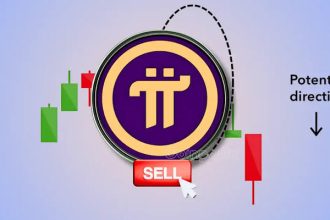Pi Network, the innovative cryptocurrency that gained massive popularity in recent years, is set to face a significant shift in its availability and scarcity. As the network continues to grow and mature, the Pi token is expected to become scarcer, leading to potential changes in its value and overall market dynamics.
Pi Network, founded in 2019 by Dr. Nicolas Kokkalis, Dr. Chengdiao Fan, and Vincent McPhillip, stands out from other cryptocurrencies by offering a unique approach to mining and distribution. Unlike traditional cryptocurrencies that require energy-intensive mining using specialized hardware, Pi Network allows users to mine its tokens through a mobile app, making it more accessible to everyday users around the world. This innovative and eco-friendly approach has contributed to Pi’s soaring popularity and rapid adoption.
The Pi Network operates on a consensus mechanism called “Proof of Stake” (PoS), which enables users to mine and earn Pi tokens by staking their existing Pi holdings. This means that the more Pi tokens a user holds and the longer they participate in the network, the more Pi they can mine and accumulate.
During its early stages, Pi Network employed a generous mining rate to incentivize user adoption and network growth. Users were able to mine Pi tokens at a relatively high rate, which made it easier to accumulate a substantial amount in a short period. As a result, the Pi community quickly expanded, attracting millions of users worldwide.
However, as Pi Network progresses towards its vision of becoming a widely accepted digital currency, the mining rate is expected to decrease gradually. The network’s developers have been planning to implement a halving mechanism, similar to that of Bitcoin, to control the inflation of Pi tokens. This means that the rate at which new Pi tokens are mined will reduce at regular intervals.
The decision to reduce the mining rate is driven by the need to establish scarcity within the Pi ecosystem. Scarcity is a fundamental concept that underpins the value of many traditional and digital assets. As the availability of Pi tokens becomes scarcer, the demand for the cryptocurrency is likely to increase, which can potentially lead to higher prices and enhanced market stability.
Pi Network’s roadmap also includes plans to transition from a centralized application to a fully decentralized blockchain. This move aims to increase security, transparency, and independence while empowering the community to participate in the governance of the network. As the decentralization process unfolds, the control over Pi’s issuance and distribution will be further relinquished, cementing the network’s position as a true decentralized cryptocurrency.
Investors and enthusiasts are closely monitoring Pi Network’s progress and development, as its unique mining model and focus on user-friendliness have attracted a dedicated and passionate community. With its emphasis on sustainability, inclusivity, and mass adoption, Pi Network has the potential to carve out a significant niche in the competitive cryptocurrency landscape.
It is important to note that investing in cryptocurrencies, including Pi, comes with inherent risks. The cryptocurrency market is known for its volatility, and the value of tokens can fluctuate dramatically over short periods. As Pi Network evolves and scarcity takes effect, potential investors are urged to conduct thorough research, exercise caution, and seek financial advice before making any investment decisions.
The future of Pi Network looks promising as the scarcity of its tokens is set to increase over time. This strategic move is expected to add to the cryptocurrency’s appeal and could potentially impact its value positively. As Pi Network continues to break new ground in the crypto space, its community remains steadfast, eager to see the realization of its vision for a decentralized, eco-friendly, and widely adopted digital currency.













I am sending you 1π! Pi is a new digital currency developed by Stanford PhDs, with over 47 million members worldwide. To claim your Pi, follow this link https://minepi.com/daiv101 and use my username (daiv101) as your invitation code.